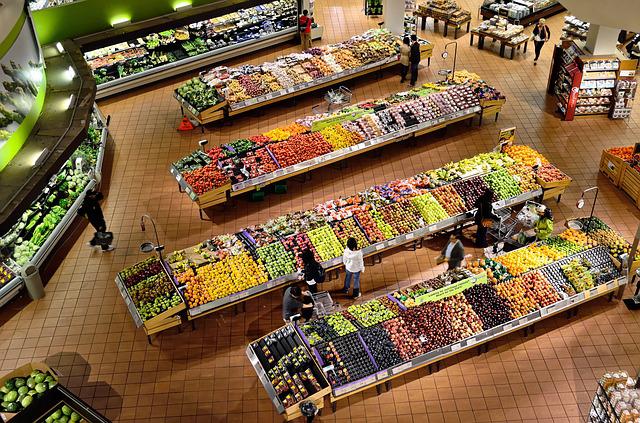Decisions, decisions, decisions. When it comes to grocery shopping, we quite literally have aisles and aisles of options. Foods from around the world, healthy foods, and of course, comfort foods. Grocery shopping can be hard and expensive, if we don’t do it carefully, it can end up costing us at the waistline and the bottom line. Luckily, for seniors looking to save move and shop healthy, Healthline Magazine offers this universal shopping guide to help build better shopping habits.
Shop Healthy
Healthline’s shop healthy guide has some key steps, and as with every shopping trip, it starts with making a list.
Making a shopping list doesn’t have to be a chore and can be quite fun. It helps to take stock of your kitchen, fridge, and pantry to see what you need. This can also help you stick to a budget, protecting us from spending large sums of money and accidentally overstocking ourselves. Typically, a good, healthy shopping list will include:
- Fruits (seed fruits like strawberries)
- Starchy and Non-starchy Vegetables (corn and broccoli)
- Proteins (fish and chicken)
- Frozen goods (frozen fruits and veggies)
- Beverages (water and non-mixed alcohol)
- Low fat Dairy (milk and cheese)
- Grain and nuts (bread and almonds)
Getting the necessary ingredients to prep meals ahead of time and knowing how to equally section off your freezer space to house more food will help you stick to a diet, have healthy food on hand, and create more time between grocery store trips.
At the Store
Once we’re at the store itself, there are some specific tips we can follow to help us shop healthy.
The first thing we can do easily is have a destination in mind. By following our list, we can check things off quickly by picking them up first. If we meander, chances are we are more likely to shop off list. Heading straight to the fruits, vegetables, and proteins sections of the supermarket will help us prioritize our shopping needs.
Secondly, we need to be able to understand food labels. Just because something is packaged doesn’t mean it is automatically unhealthy. However, if we get distracted and don’t pay attention to the nutritional information then we can put our health at risk by buying the wrong thing.
Food labels are created, managed, and sponsored by the Food and Drug Administration (FDA). The FDA also inspects meat and poultry to ensure that it is clean and safe to eat. When looking at food labels, look at the amount of nutrients a package offers, as well as the sugar, carb, and protein ratio. Having more sugar is worse than having more carbs.
Be wary of organic packaging as well, as food lobbyists have made it easier for food processors to be vague with their nutritional language. It may be organic, but it may also have processed amounts of sugar too.
Shopping Better
As we mentioned, shopping is a chore. But it doesn’t have to be. Sticking to a list and having a plan in mind can make it easier and even a little fun. If you are shopping with your family, or desperately need a cheat, you can make sure your cart is diversified with healthy options and then limit yourself to one treat from the dessert aisle.
Make it a game, like a treasure hunt. If they don’t have Neapolitan ice cream, then you’ll stick with your cart and hope they have it next time. The bottom line, all we can do is try to shop better, and the shopping healthy will follow.
For more retirement tips and tricks, follow along with the Council for Retirement Security.
